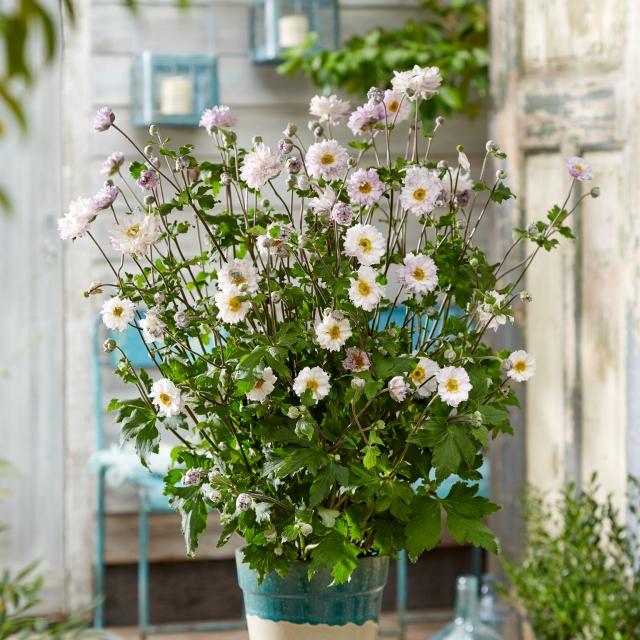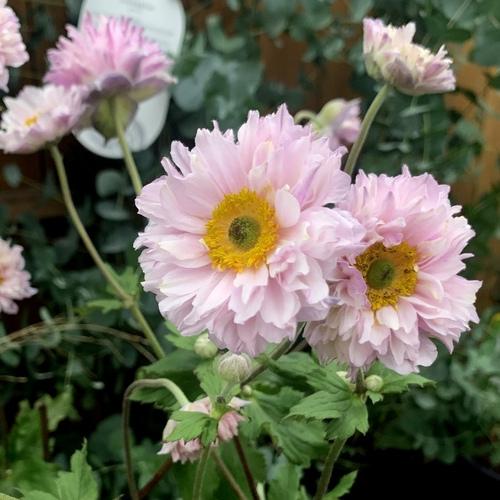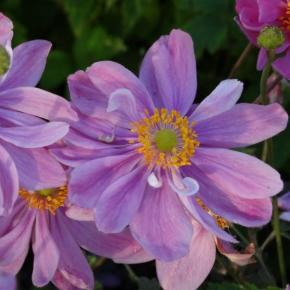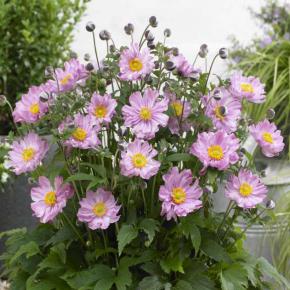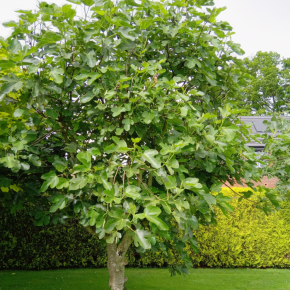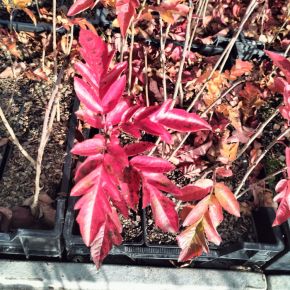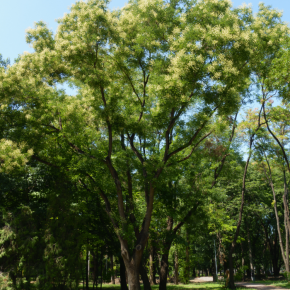A beautiful variety of Anemone with semi-double to double flowers with white to pale lilac crumpled petals when fading. They remain compact and very branched, reaching a spread of 60cm. The Frilly Nickers® Anemone offers numerous flowers from late summer to autumn.
|
Packaging
To find out more about our packaging, please visit our young plants' page available from the website header.

|
Available quantity | Dispo à partir de | Sold by | Desired quantity | |
|---|---|---|---|---|---|
|
Le stock n'est actuellement pas disponible pour ce produit. |
|||||
The characteristics of ANEMONE Frilly Nickers ®.
Beautiful semi-double, ruffled flowers open in pure white with pale lilac tints. The backs of the petals are brushed with a deep purple, which only adds to its appeal. The heart of the flowers consists of golden yellow stamens that reveal the colour of the petals. A hardy perennial, Frilly Nickers® ANEMONE is well branched and compact, and from late August to October it produces a multitude of flowers, adding colour to the garden at the end of the season when the other plants begin to fade. The delicate flowers dance in the wind, adding to the romance of the plant.
How to use ANEMONE Frilly Nickers ®.
Ideal for beds, borders and flower pots where the nectar-rich flowers will attract bees. In the undergrowth or in semi-shade beds, it will brighten up the beds at the end of summer.
What tips do you have for growing the Frilly Nickers ® ANEMONE successfully?
Easy to grow and very floriferous, it prefers semi-shade but can cope with a little more sun if the soil is good enough, moist and rich in humus.

